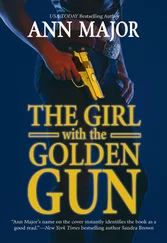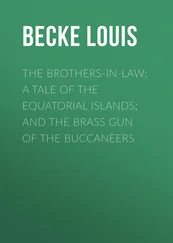One of the dead men proved to be a twenty-six-year-old Illinois state prosecutor named William McSwiggin, known as the “hanging prosecutor” for his aggressive pursuit of gangsters. In response, police raided Capone’s headquarters, seizing the ledgers that Internal Revenue agent Frank Wilson would later discover at the back of a file cabinet and that would provide the first solid evidence of Capone’s income.
The attack triggered an arms race. Capone’s enemy, Hymie Weiss, whose gang controlled the North Side of Chicago, acquired Thompsons and, on September 20, 1926, launched a retaliatory attack against Capone, the most spectacular—if ineffective—attack of the Prohibition era, dubbed the “Siege of Cicero.”
Capone’s headquarters were situated in the Hawthorne Hotel in Cicero, Illinois, some two blocks from the Chicago line. Shortly after one P.M. on September 20, 1926, Capone and his associates were seated in the Hawthorne’s first-floor restaurant, which was packed with other diners. They heard the telltale chatter of a machine gun somewhere down the street, but none of the screams and sounds of shattering glass that tended to accompany that kind of attack. Intrigued, they went to the windows of the restaurant—exactly what Hymie Weiss’s men had intended. That first machine gun was a lure; it was loaded with blanks.
A Capone bodyguard quickly recognized the trap and forced Capone down. As everyone in the restaurant hit the floor, a convoy of ten limousines and touring cars slowly made its way up the street, machine guns and shotguns firing from every window, pumping some one thousand rounds into the room.
No one in the room was hit. Outside, two members of a Louisiana family—the mother and her five-year-old son—were slightly wounded. A minor member of Capone’s gang who had been standing outside the restaurant was nicked by a bullet.
The Thompson submachine gun quickly migrated from Chicago. It turned up next during a gang war in southern Illinois, which even featured dynamite dropped from a biplane. (The bombs never went off.) Philadelphia experienced its first tommy-gun attack on February 25, 1927, New York on July 28, 1928.
The violence became more grotesque, less the “innocent” battlings of bad guys against bad guys.
On February 14, 1929, a Cadillac with a siren and gong pulled up in front of the S.M.C. Cartage Company in Chicago. Two men in police uniforms and two in civilian clothes—one wearing a chinchilla coat—stepped from the car. The officers entered the building and announced a raid, ordering the seven men inside to put their hands up and face the wall. Six of the men had ties to a gang led by George “Bugs” Moran; the seventh was a young optician named Reinhart H. Schwimmer, who had become enthralled with the mob and had stopped by that day for coffee.
The two civilians, each carrying a Thompson, entered next and began firing, instantly cutting down the seven men. For good measure, one of the gunmen then fired from ground level into the tops of their heads. The two gunmen then put their own hands up and were marched back to the car by the two men dressed as policemen.
The St. Valentine’s Day Massacre marked a change in the public’s willingness to accept gang violence. The brutality of the crime, the fact the men were shot in the back, somehow seemed a violation of criminal etiquette.
As other massacres followed, the revulsion grew. On July 28, 1931, gangster Vincent Coll tried to kill one of Dutch Schultz’s men as he sat in front of a social club on E. 107th Street in New York. The target escaped unharmed, but the attack, quickly dubbed the Baby Massacre, left five children wounded. One, a baby in a baby carriage, later died. Coll may or may not have used a tommy gun, but the gun took the blame anyway.
Within a month, two other New York gun battles killed two girls, one eighteen, the other only five. In the latter, gunfire also killed two policemen and three of the assailants and wounded twelve other people.
Crime seemed poised to overwhelm the country. In 1932, the Lindbergh baby was kidnapped and murdered. (Capone offered $10,000 for information on who did it.) Killers of all kinds—John Dillinger, Pretty Boy Floyd, Machine-Gun Kelly (who contrary to myth never fired a gun in the course of a crime), Clyde Barrow and Bonnie Parker, Baby Face Nelson, and “Ma” Barker—rampaged over the countryside. Bonnie Parker, once again demonstrating that penchant of our heroes of violence for promoting their own legends, wrote poetry about her exploits with Clyde. One, titled “The Story of Bonnie and Clyde” and released to newspapers by Bonnie’s mother, linked the pair to the mythic outlaws of the Wild West:
You’ve read the story of Jesse James—
Of how he lived and died,
If you’re still in need
Of something to read
Here’s the story of Bonnie and Clyde.
Soon after the poem was published, police at last caught up with Bonnie and Clyde and killed them both.
One result of all this mayhem was a host of gangster movies, beginning with the 1930 hit Little Caesar . In 1931 alone, Hollywood made fifty gangster films. And once again myth and reality converged. On October 14, 1931, Edward G. Robinson, who starred in Little Caesar , sat in on Al Capone’s tax evasion trial, which would end three days later and result ultimately in his being sent to a brand-new prison built on Alcatraz Island in San Francisco Bay.
A more significant result, however, was the National Firearms Act of 1934, which regulated the sale and manufacture of machine guns and other “gangster-type” weapons, such as silencers and sawed-off shotguns, and gave responsibility for enforcement to the Alcohol Tax Unit of the Internal Revenue Service. You could still buy a machine gun, but now you had to register the gun and pay a $200 tax. At the time, this was real money, more than the retail price of a Thompson, which Auto-Ordnance had reduced to $175 in its continuing quest for orders from the U.S. military. The tax remains $200 today, no longer quite the disincentive the law’s crafters meant it to be.
In 1938, Congress passed the next round of federal controls with the Federal Firearms Act, which required the licensing of gun dealers and set the cost of a license at a whopping one dollar. (The National Rifle Association had argued even this was too high and should have been something nominal, say fifteen cents or a quarter.)
The next great spasm of domestic violence took place in the 1960s, with the assassinations of John F. Kennedy, Robert Kennedy, and Martin Luther King, Jr.; Charles Whitman’s shooting spree from the top of the University of Texas tower, which killed fourteen people; and the overall unrest that tore the nation’s cities apart in the late 1960s. This time the result was a more comprehensive set of firearms laws, called the Gun Control Act of 1968. It boosted dealer fees to $10 and required that they keep detailed records of incoming and outgoing guns. It also forbade the sale of rifles, shotguns, and handguns to felons and others deemed unfit to own guns. And taking its cue from Lee Harvey Oswald’s mail-order purchase of the rifle he used to kill the president, the law banned mail-order sales of guns directly to individuals. Congress assigned enforcement of the act to the Alcohol & Tobacco Tax Division of the IRS, which became the Alcohol, Tobacco & Firearms Division.
Law-enforcement agents within the ATFD welcomed their new responsibilities. They were accomplished lawmen with a lot of nitty-gritty, dangerous experience in battling the moonshiners of the South. But officially they were employees of the Internal Revenue Service, the nation’s tax collector. The images clashed. “When our law-enforcement officers were asked who they were, they would say Treasury agents,” said Rex D. Davis, a former director of ATF who at the time was an assistant regional commissioner of the ATFD. In outlying field offices, the agents placed signs on their doors that said Treasury Department. “Our guys didn’t want to be Internal Revenue agents.”
Читать дальше
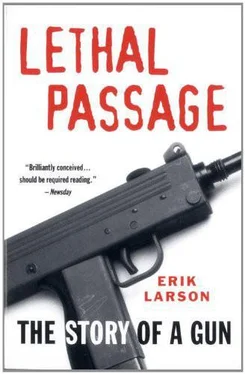
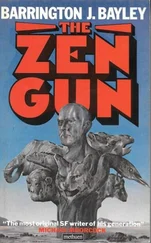
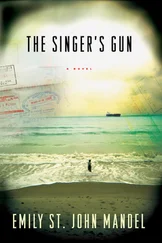

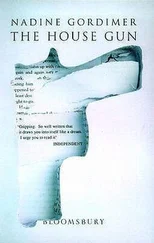

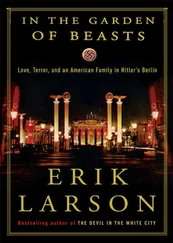

![Ричард Деминг - Whistle Past the Graveyard [= Give the Girl a Gun]](/books/412176/richard-deming-whistle-past-the-graveyard-give-t-thumb.webp)
